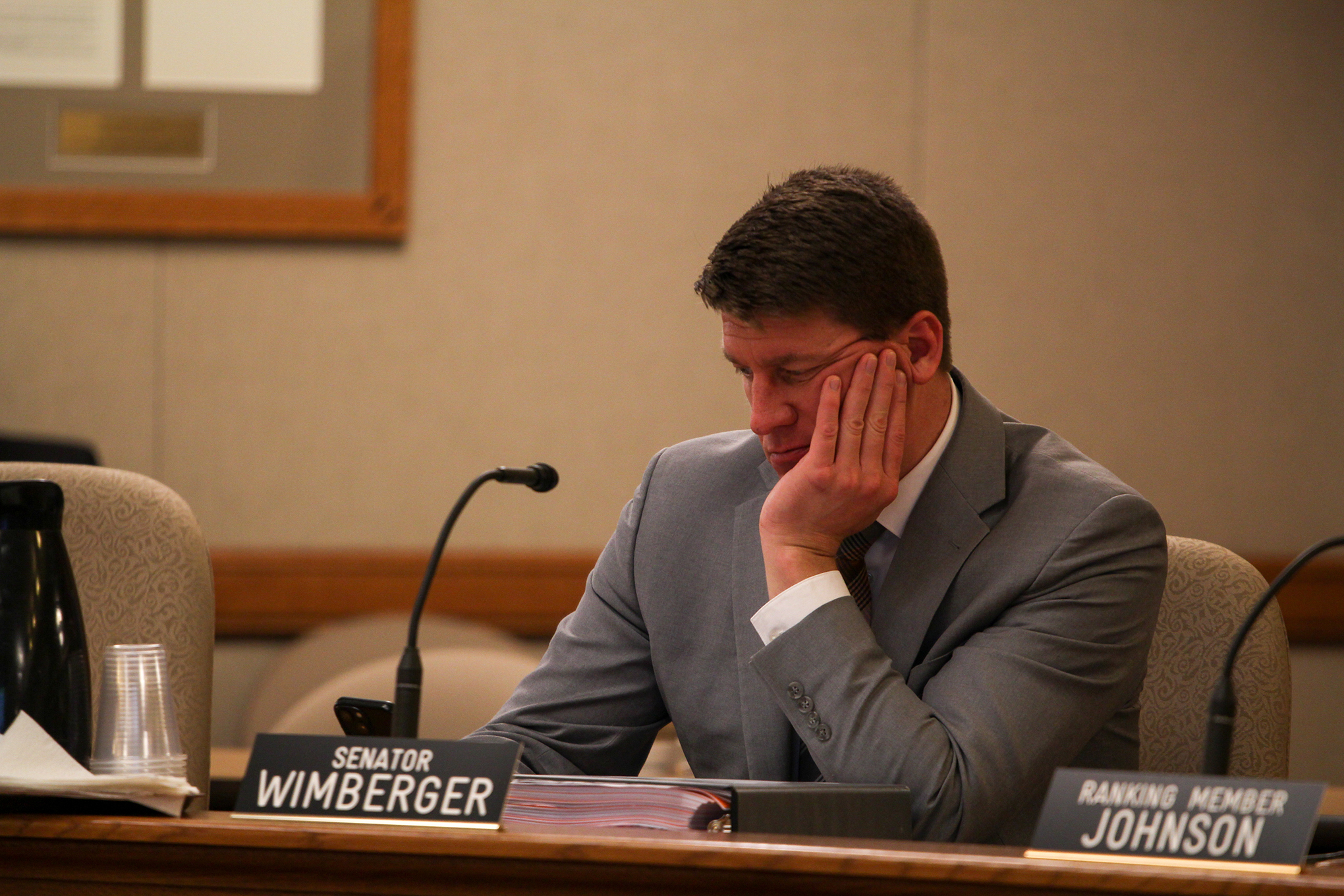The Environmental Protection Agency unveiled new federal standards Wednesday for harmful “forever chemicals” in drinking water, saying the action will reduce exposure for around 100 million people and prevent thousands of PFAS-related deaths and illnesses.
The agency also announced an additional $1 billion under the Bipartisan Infrastructure Law for testing and treatment of the chemicals, bringing the total investment to combat PFAS contamination to $21 billion.
The agency set individual limits for the two most widely studied PFAS chemicals — PFOA and PFOS — at 4 parts per trillion. Three other PFAS, including GenX chemicals, will be limited to 10 parts per trillion. The EPA is also regulating a mix of four other PFAS, including PFNA, PFHxS, PFBS and GenX chemicals.
“Drinking water contaminated with PFAS has plagued communities across this country for too long,” EPA Administrator Michael S. Regan said in a statement. “That is why President Biden has made tackling PFAS a top priority, investing historic resources to address these harmful chemicals and protect communities nationwide.”

The federal standards for PFOA and PFOS are roughly 17 times lower than Wisconsin’s drinking water standard of 70 parts per trillion for the two chemicals. That means the Wisconsin Department of Natural Resources will have to adjust its limits to reflect the new federal regulation.
“Overall, Wisconsin’s public water systems are well positioned to comply with the EPA’s enforceable standards,” Steve Elmore, director of the DNR’s Bureau of Drinking Water and Groundwater, said in a statement. “The DNR set enforceable standards for two types of PFAS in public drinking water in 2022. Over the last year, public water systems throughout Wisconsin have sampled at least once for these and other PFAS.”
The DNR said state standards may remain in place for up to three years until the state crafts new rules to comply with the new federal standards. The agency is also asking the Department of Health Services to update its health-based limits for six chemicals.
“DHS is committed to protecting Wisconsinites from exposure to PFAS, including diligently reviewing the new scientific information available from EPA,” Kirsten Johnson, DHS secretary-designee, said in a statement.
PFAS are a class of thousands of synthetic chemicals widely used by industry since the 1940s. They’ve been used in everyday products like nonstick cookware, stain-resistant clothing, food wrappers and firefighting foam. The chemicals don’t break down easily in the environment. Research shows high exposure to PFAS has been linked to kidney and testicular cancers, fertility issues, thyroid disease and reduced response to vaccines over time.
Stay informed on the latest news
Sign up for WPR’s email newsletter.

The limits are the first proposed standards for the chemicals in drinking water since industry first alerted the EPA to the health hazards of PFAS nearly 25 years ago. Documents show companies like 3M knew PFAS could be toxic and posed health risks as far back as the 1960s.
The EPA estimates up to 10 percent of the nation’s 66,000 public drinking water systems must limit PFAS to meet the new standards. The Wisconsin DNR said 95 percent of nearly 2,000 public water systems sampled in the state have levels of the chemicals below the new federal limits.
“The other 5 percent that might be over the new final EPA standards, we’ll be working with them over the next three to five years to help them provide water that would meet those new standards,” Adam DeWeese, the DNR’s public water supply section manager, said.
Wisconsin communities continue to tackle PFAS contamination
In Wisconsin, PFAS has been found in communities from small towns like Peshtigo and Campbell to larger cities like Eau Claire, Wausau and Madison.
Kayla Furton, a resident in the town of Peshtigo, told WPR the standards are a huge step toward safe water.
“There’s still so many action steps that need to be taken at the federal and the state levels, but every step towards regulation … is a huge win for communities everywhere,” Furton said.
In Wausau, the city council approved borrowing $17.5 million late last year for a treatment system that will use granular activated carbon to remove the chemicals from drinking water. Katie Rosenberg, the city’s outgoing mayor, told WPR the cost to treat for the chemicals will be a challenge for some Wisconsin communities.
“That’s going to be where the state of Wisconsin needs to come in and kind of help guide us to make sure that all these communities have access to funding and that it’s not always on the backs of ratepayers,” Rosenberg said.
Gov. Tony Evers has repeatedly asked Republican lawmakers to release $125 million set aside under the current two-year budget to help communities address PFAS pollution. On Tuesday, he vetoed a Republican bill that would have guided how those funds would be spent, citing concerns over limits on regulators’ authority to test for and clean up the chemicals.
While Democrats and Republicans have agreed to provide aid, more than nine months have passed since Evers signed the budget and the funds are still unspent.

The governor has called a special meeting of the Legislature’s Joint Committee on Finance to release the funds, but they’ve signaled no intention to meet or act on his request. In the meantime, the DNR said it received around $92 million last year to assist communities in addressing issues like PFAS contamination.
Water and industry groups in Wisconsin have highlighted concerns over the cost of complying with more stringent standards, which is expected to reach billions of dollars nationwide. In small communities, advocates for rural Wisconsin water systems say the cost of replacing a contaminated well may run up to $5 million, and treatment may be even more costly.
Chris Groh, executive director of the Wisconsin Rural Water Association, told WPR he’s disappointed the EPA’s limits are so low. He said around 30 water supplies for communities of less than 10,000 people have PFAS levels beyond the new standards.
“No rural system has $5 or $10 million sitting in the bank,” Groh said. “The treatment is going to be expensive. The testing is going to be expensive. Everything associated with this is going to be very expensive.”
Groh and others say they would also like to see PFAS manufacturers take responsibility for costs tied to contamination. Minnesota-based 3M recently agreed to pay more than $10 billion to drinking water systems for PFAS contamination. One report from Wisconsin’s Green Fire estimated it’s already costing communities around $208 million to install treatment systems or secure alternative water supplies.

Wisconsin Manufacturers and Commerce, the state’s largest business group, has previously said the EPA’s proposed standards appear to “go far beyond any reasonable criteria for regulating PFAS.”
Meanwhile, the EPA’s proposed limits wouldn’t apply to private wells that draw from groundwater — a source of drinking water for one third of state residents. Furton said she hopes the federal limits will help move the state forward on regulating groundwater.
The DNR recently abandoned work on setting state limits for the chemicals in groundwater. The agency said a 2017 law prevents the agency from moving forward without legislative approval due to excessive compliance costs.
Both Republicans and Democrats introduced bills that would allow the agency to continue working on groundwater standards, but lawmakers wrapped up work for this legislative session without advancing either proposal.
Wisconsin Public Radio, © Copyright 2024, Board of Regents of the University of Wisconsin System and Wisconsin Educational Communications Board.



